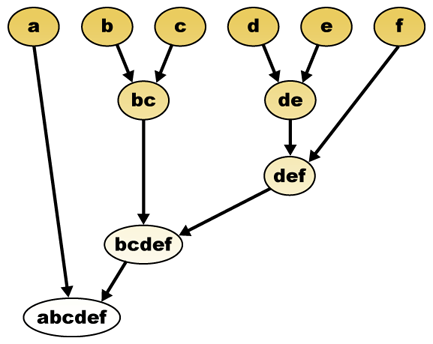The goal of unsupervised classification is to automatically segregate pixels of a remote sensing image into groups of similar spectral character. Classification is done using one of several statistal routines generally called "clustering" where classes of pixels are created based on their shared spectral signatures. Clusters are split and /or merged until further clustering doesn't improve the explanation of the variation in the scene. The success of clustering is measure by the "between cluster" versus "within cluxter" variability, maximizing the former and minimizing the latter. Given the illustration, we could easily cluster the pixels into the x, o and * clusters. But how do we get there?


The upper left diagrams (used in http://en.wikipedia.org/wiki/Data_clustering) illustrate how the euclidean distance in spectral space could be used to group pixels, with increasing within group variation and decrease between group variation. The decision of where to stop is usually a "fuzzy" decision based on change in the relative increase of classsificaiton precision. (seehttp://en.wikipedia.org/wiki/Data_clustering#Elbow_criterion). If you have had a statistics course, this process is similar to the "Analysis of Variance" techniques wherin one uses the within and between group variability to assess the ability to distinguish between them.
The images below illustrate the unsupervised classification of a landsat scene near Lexington .






0 commentaires